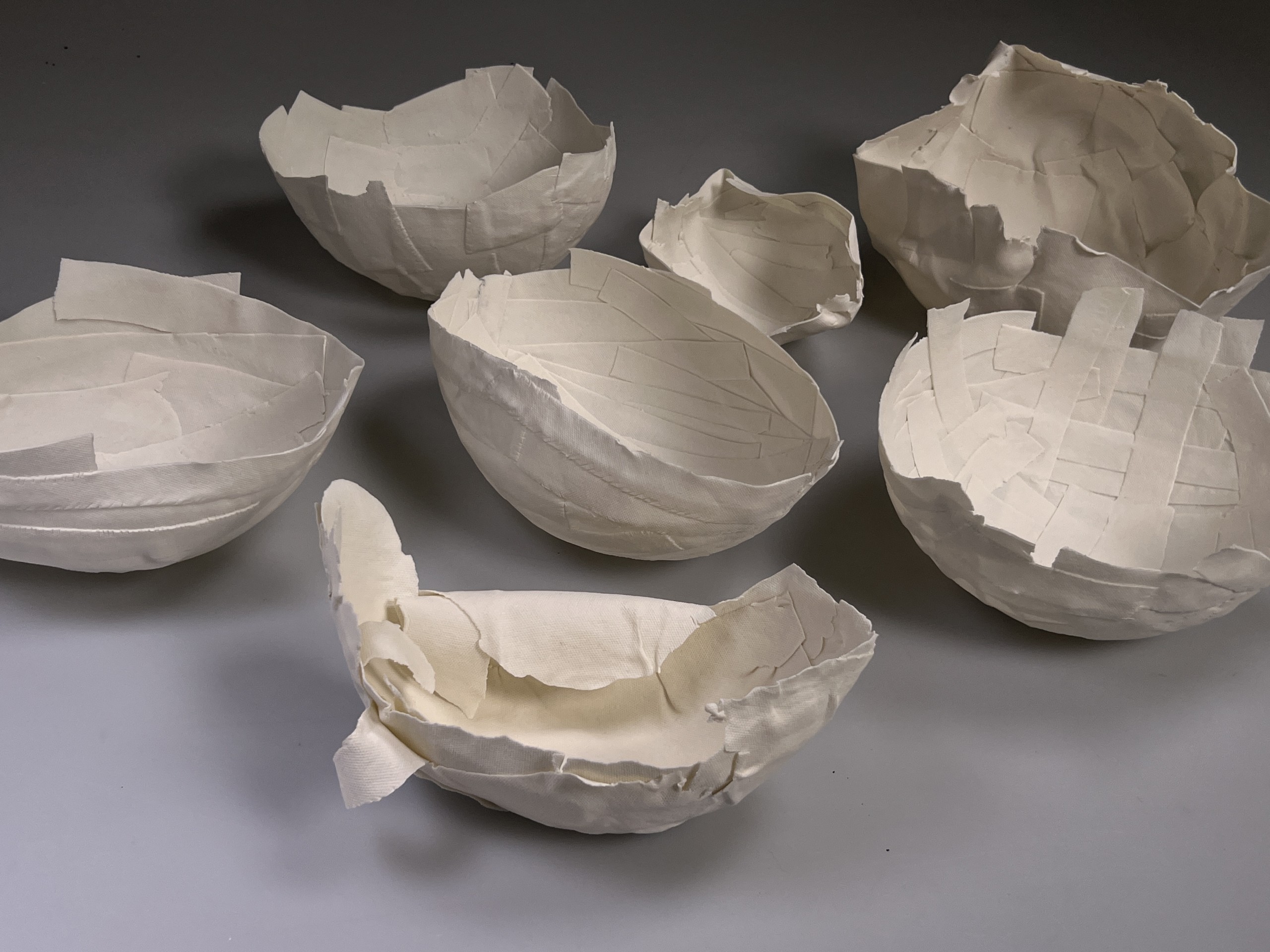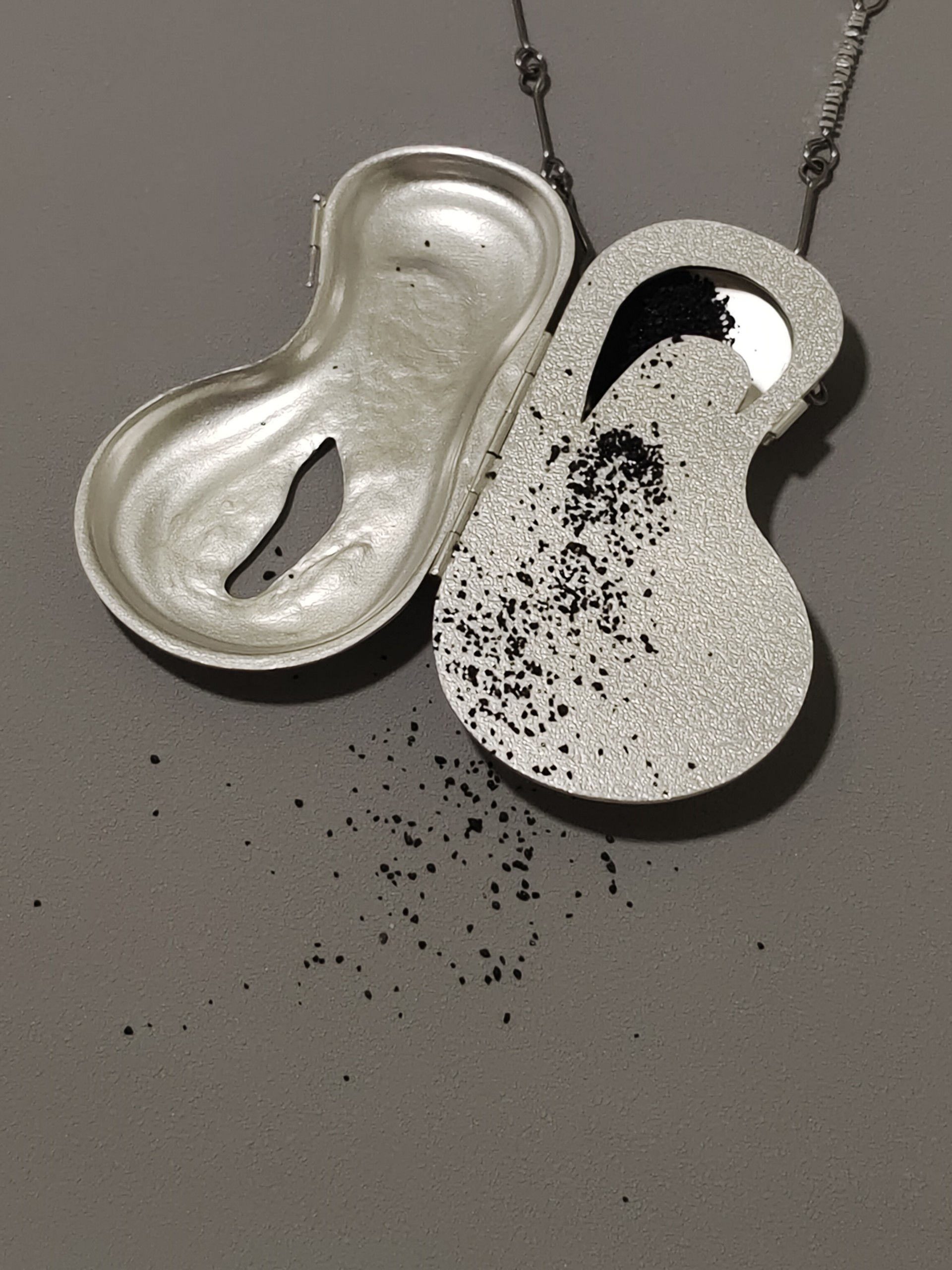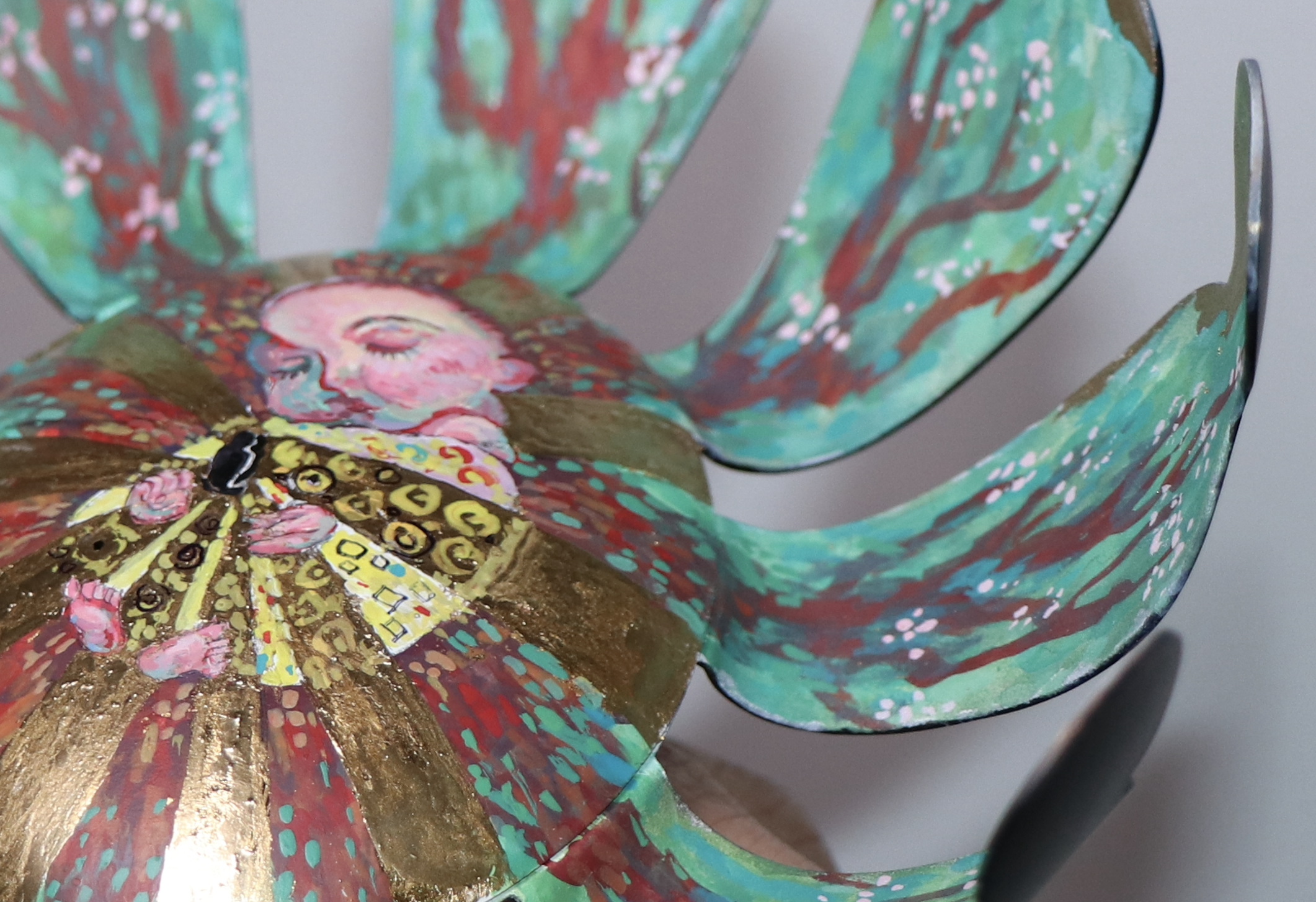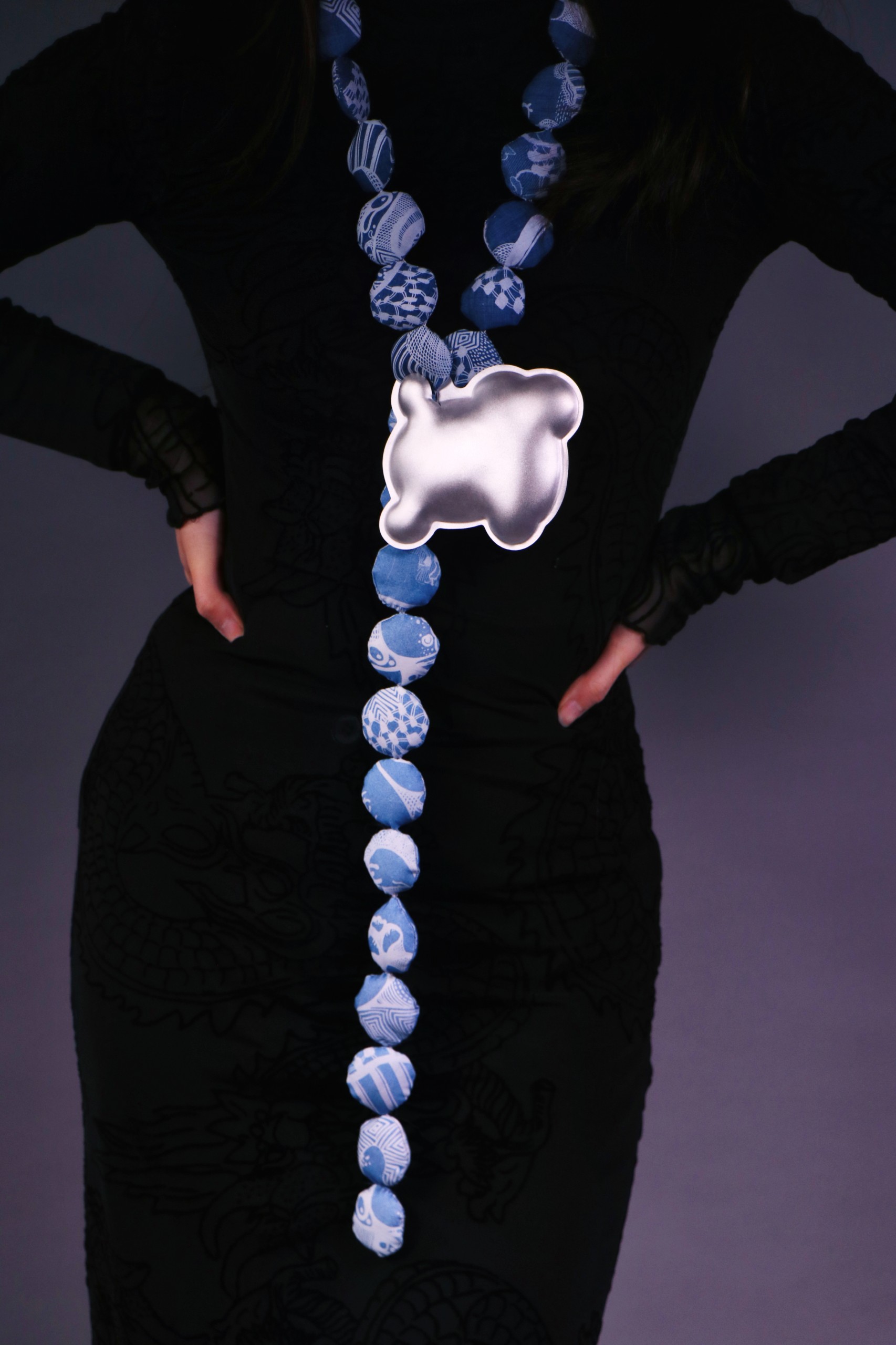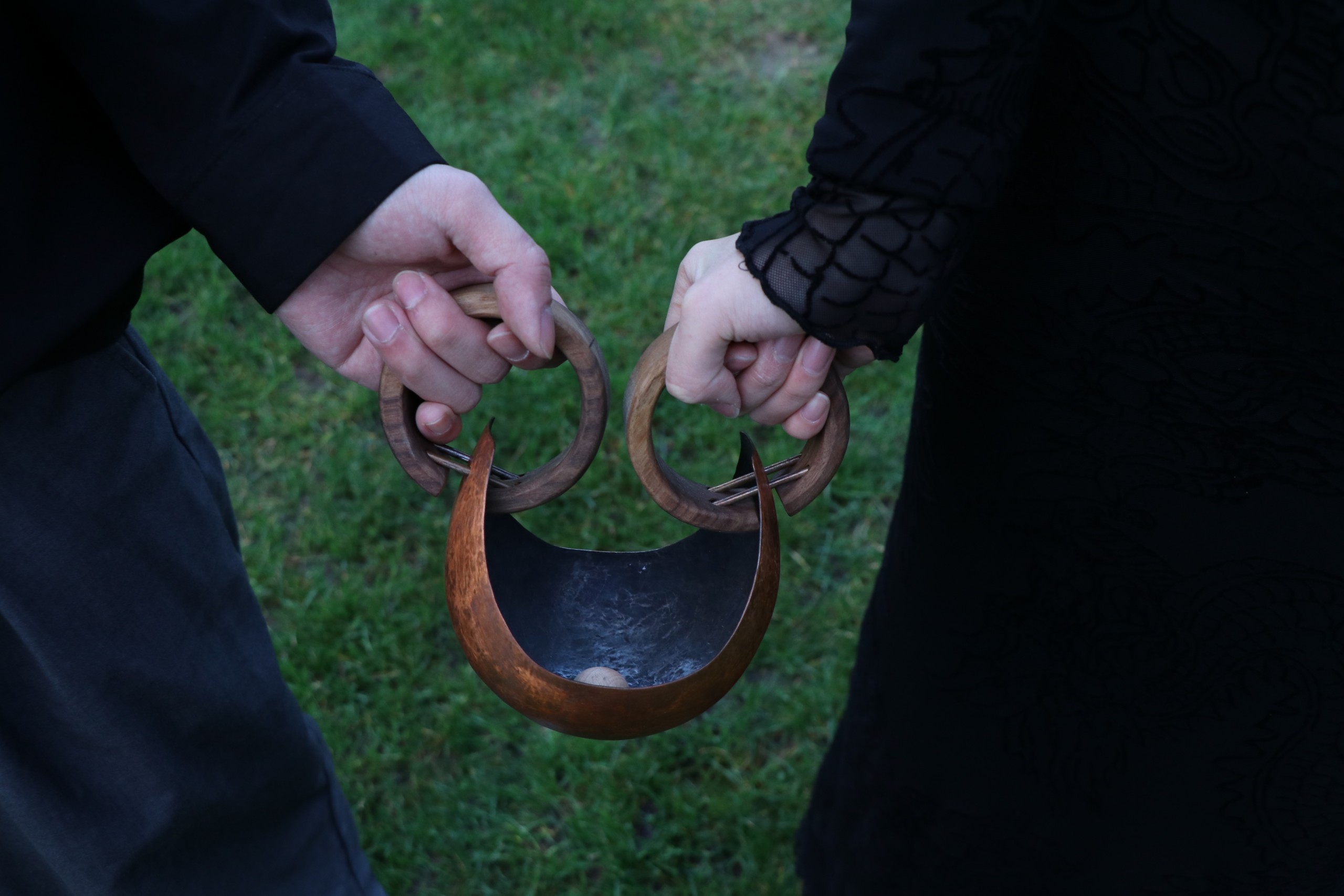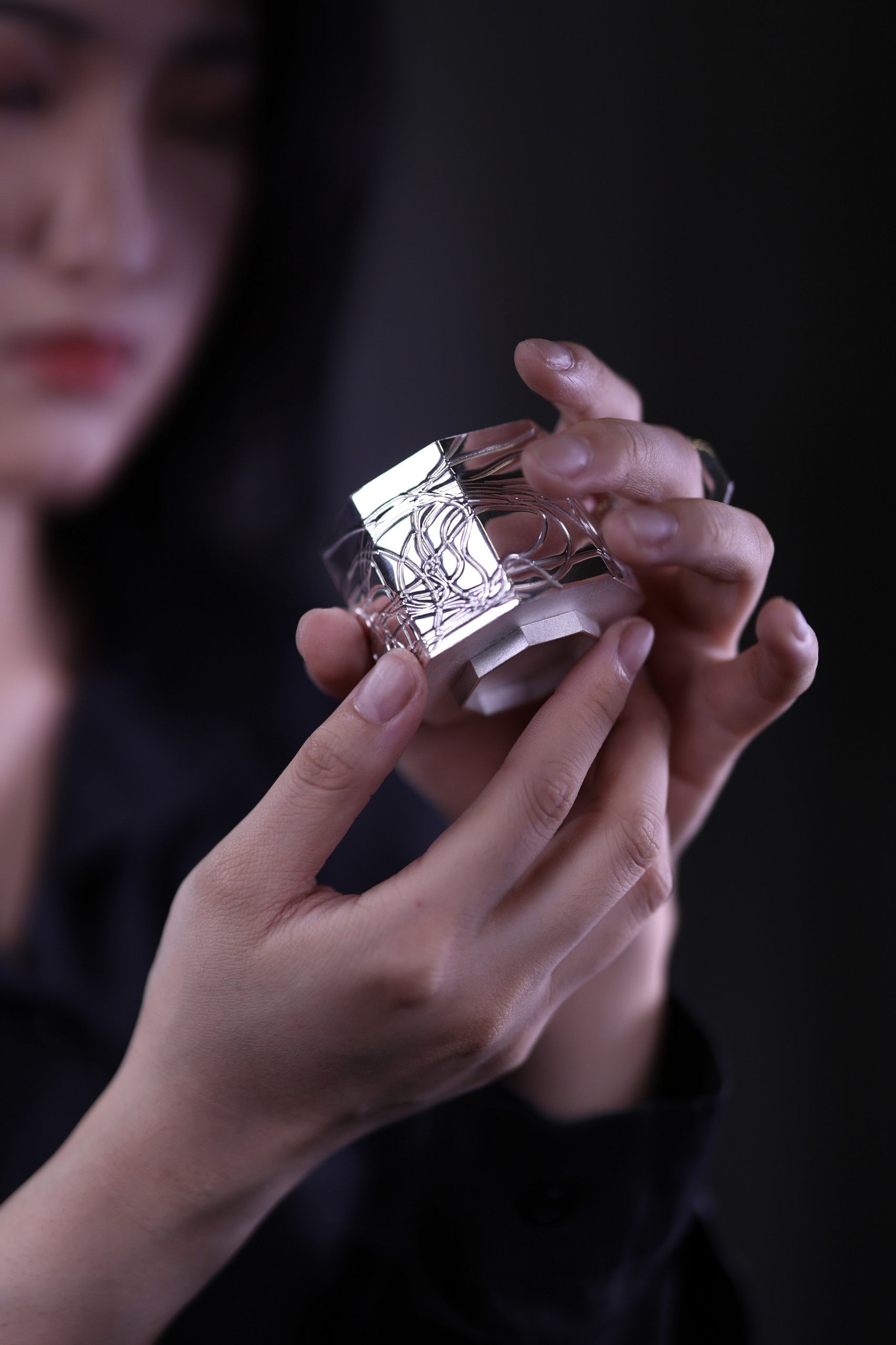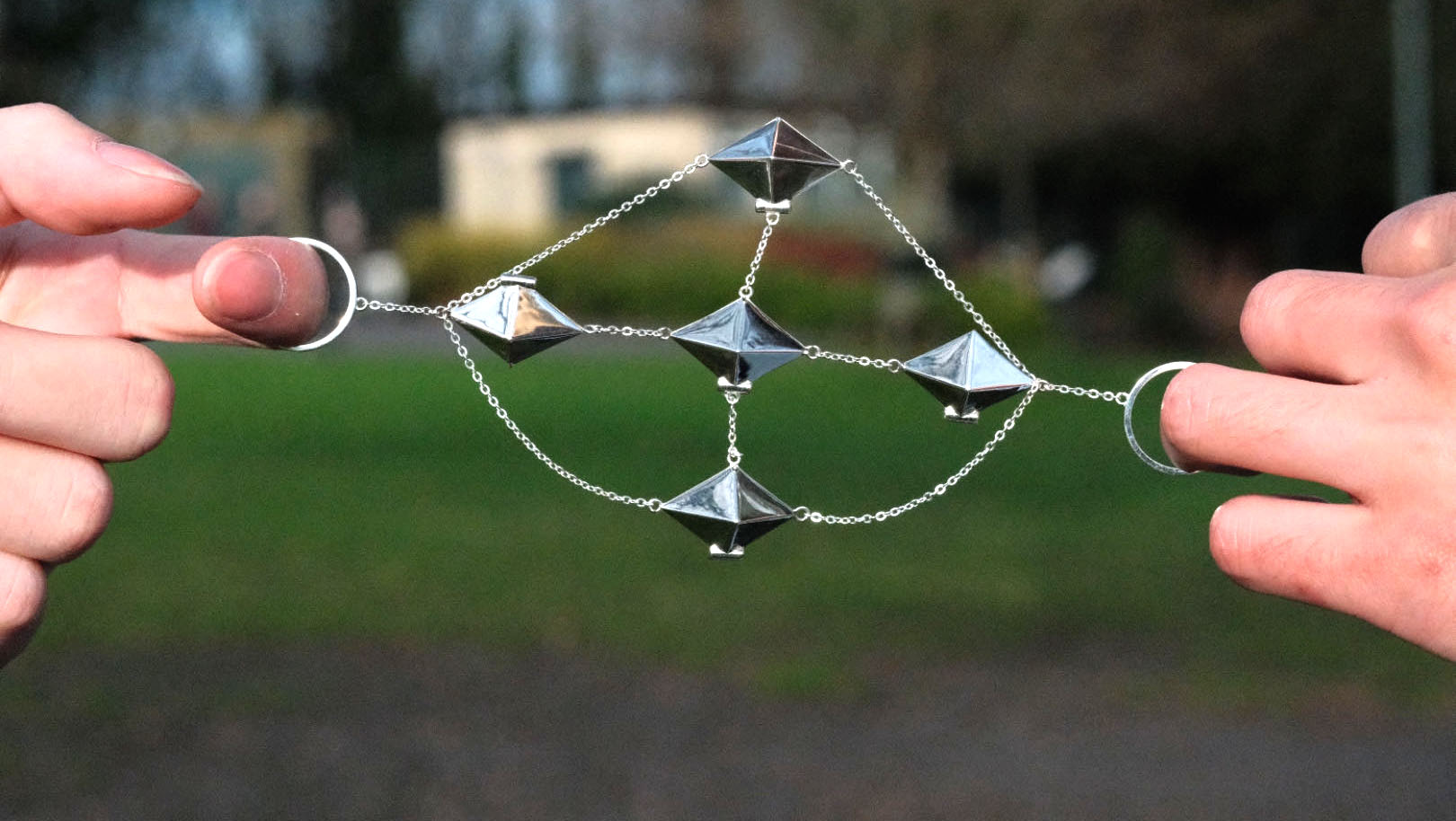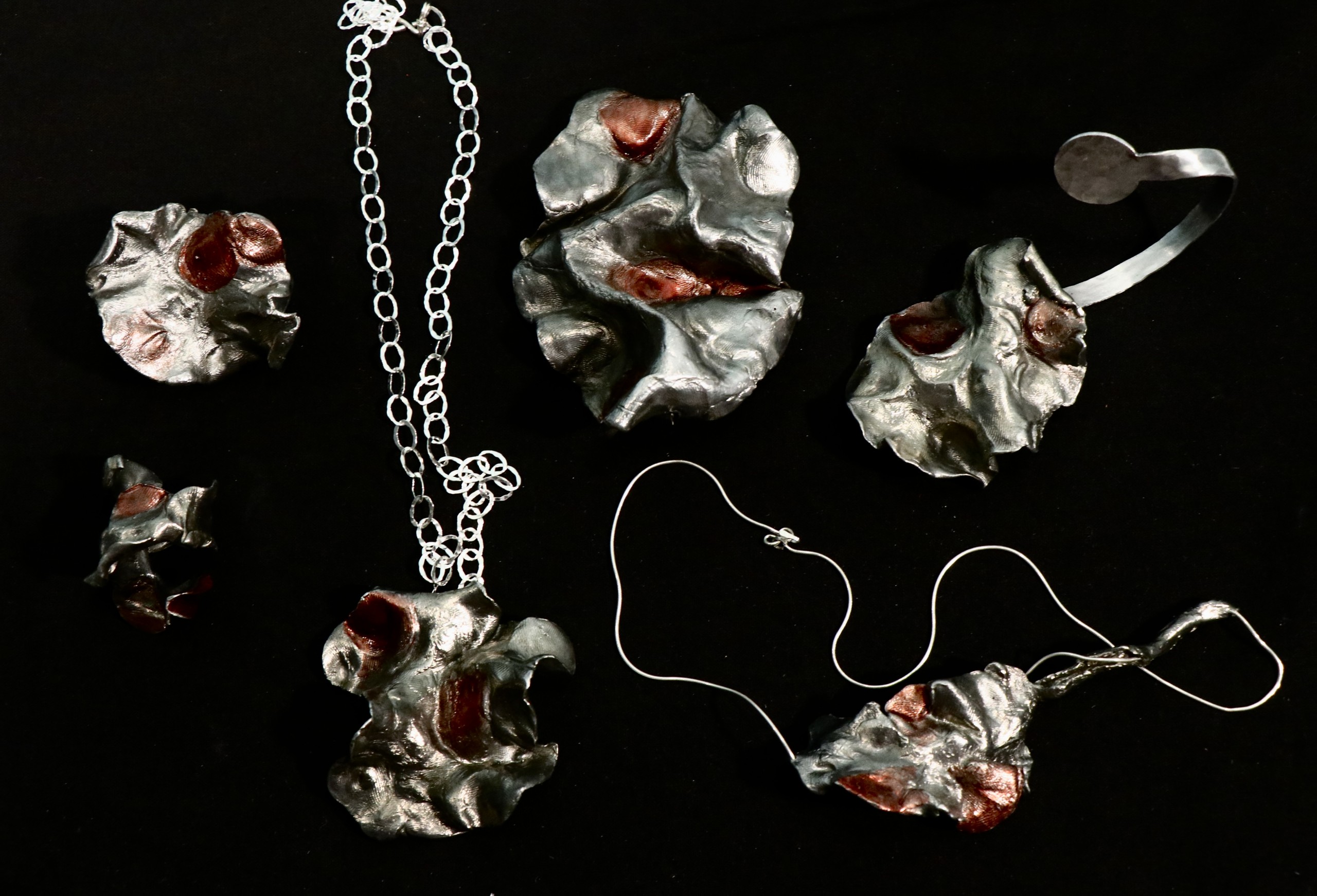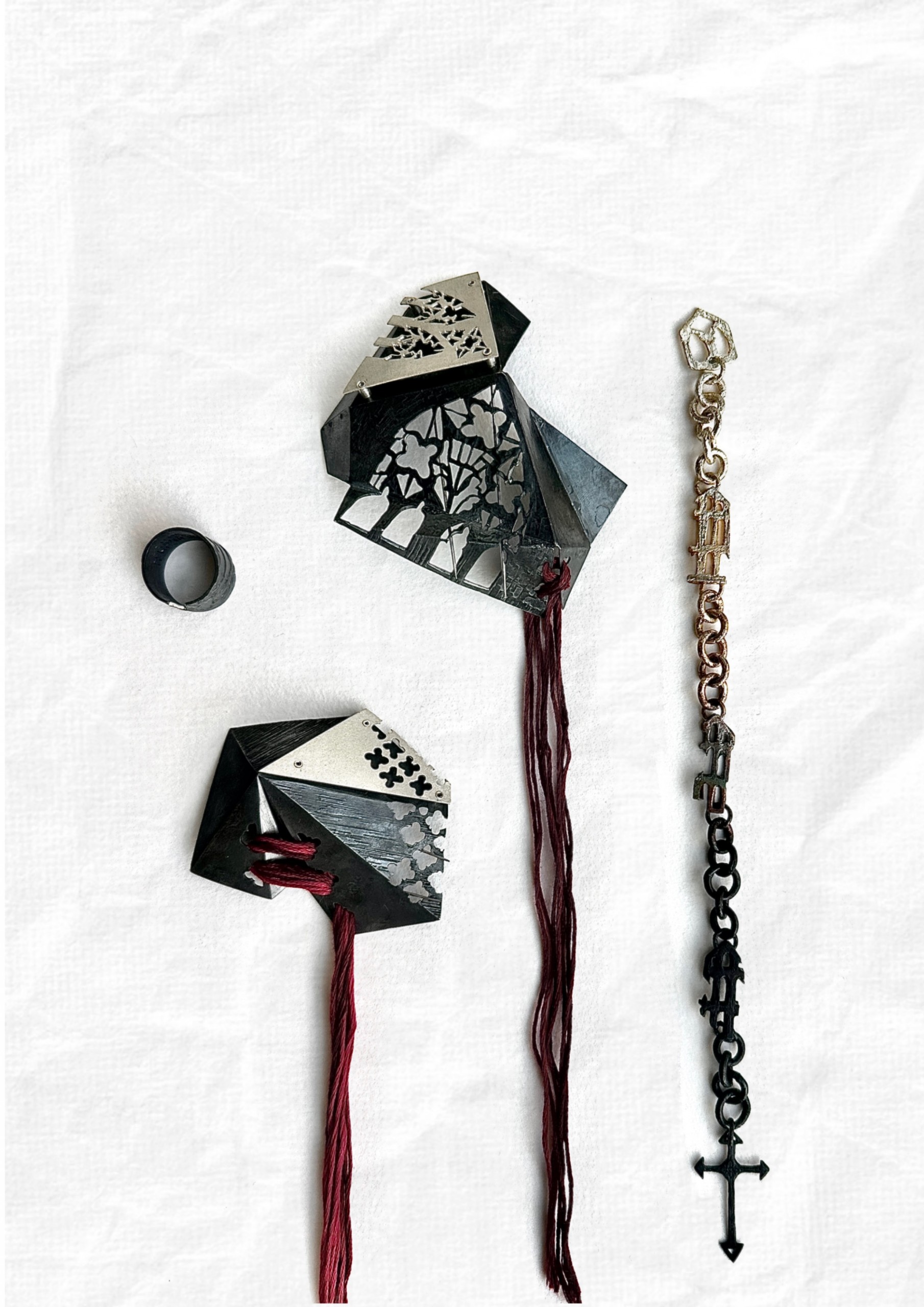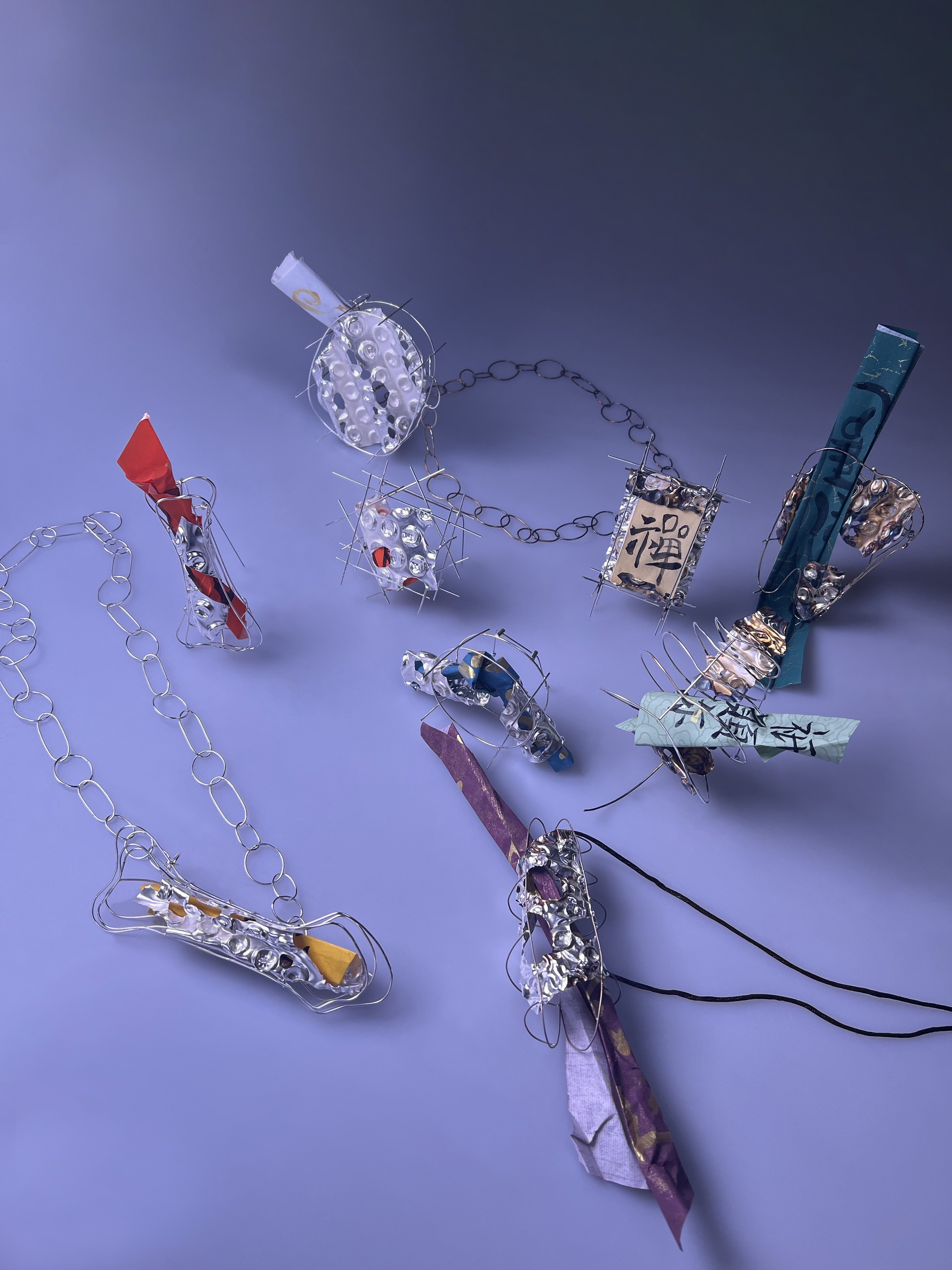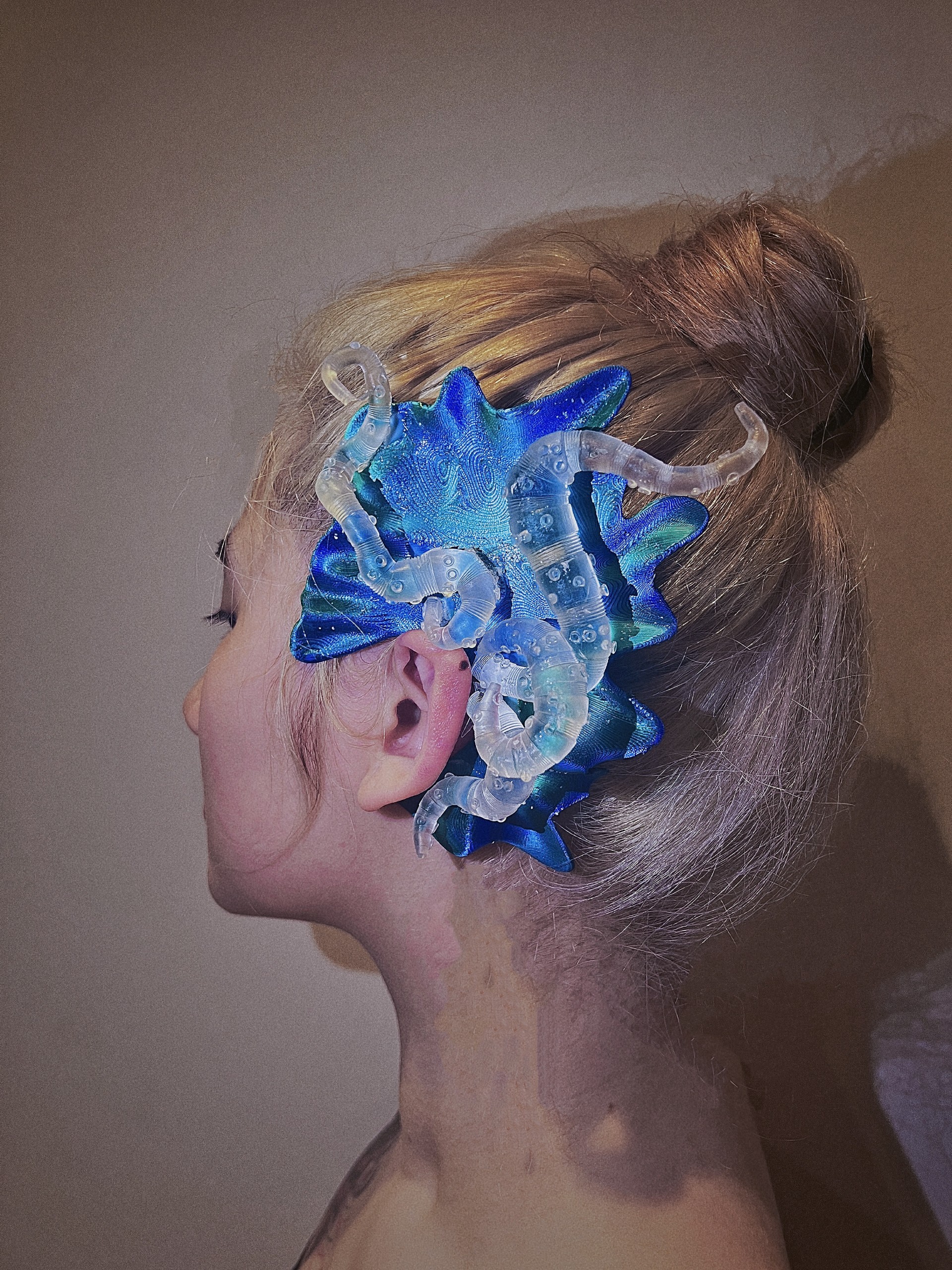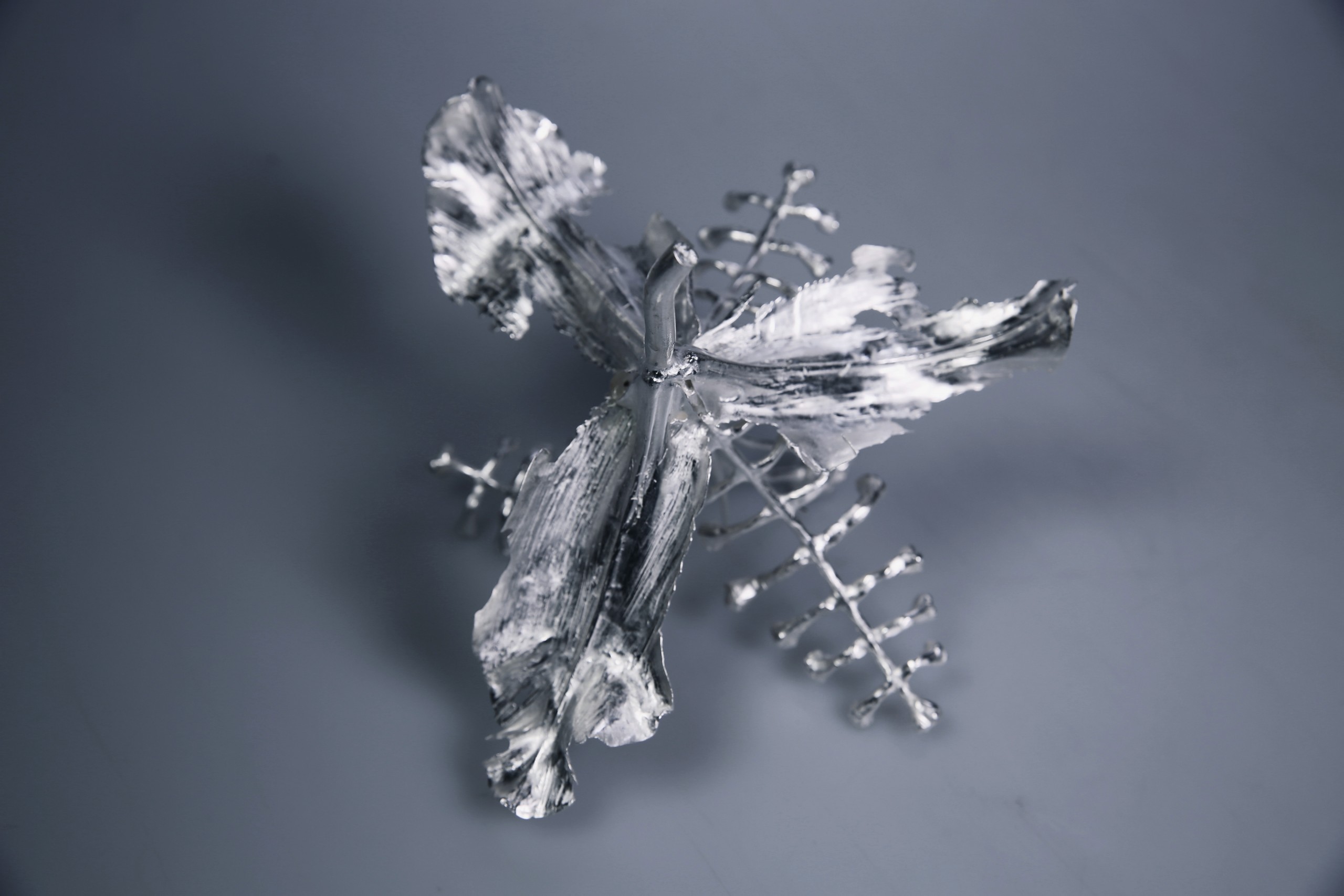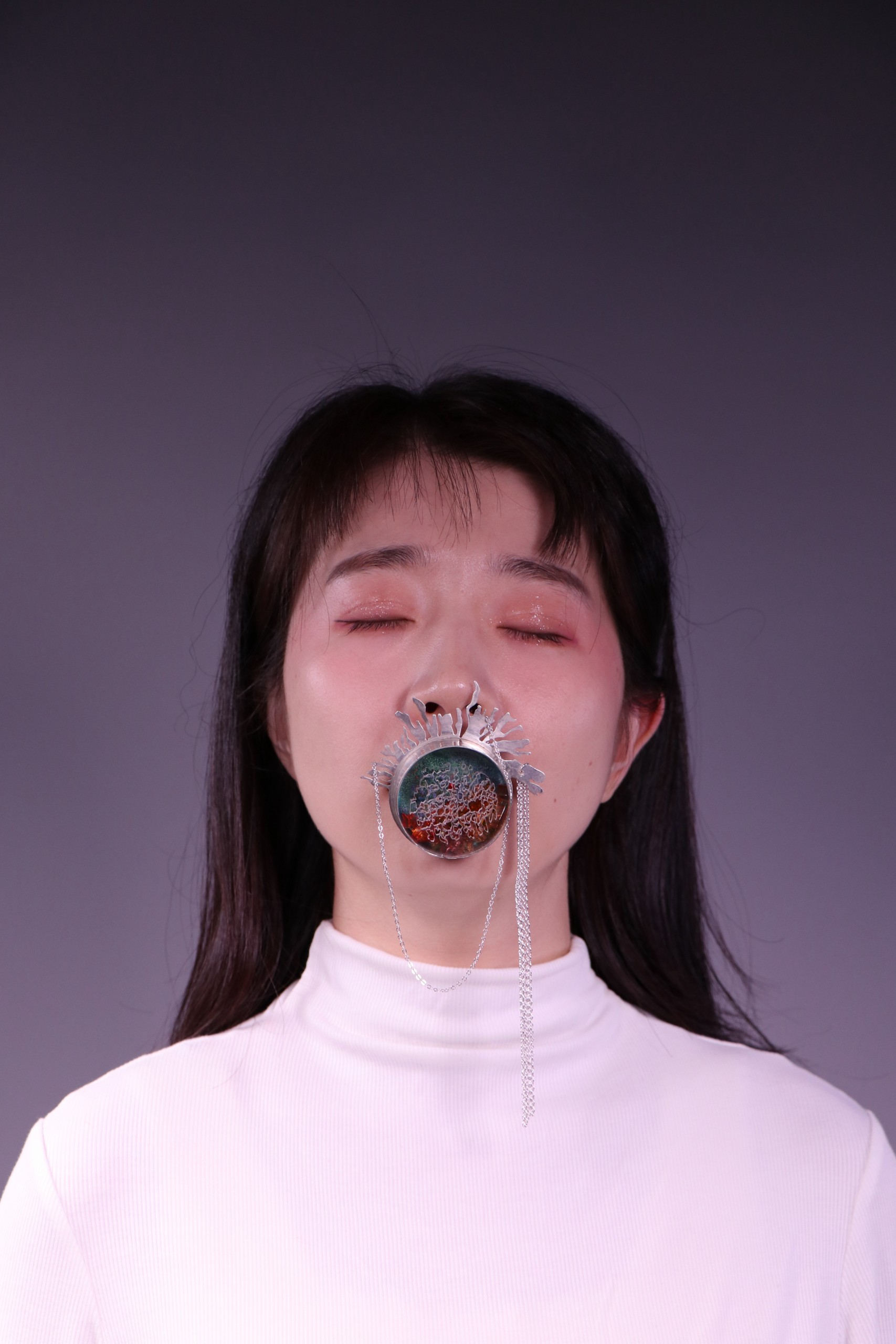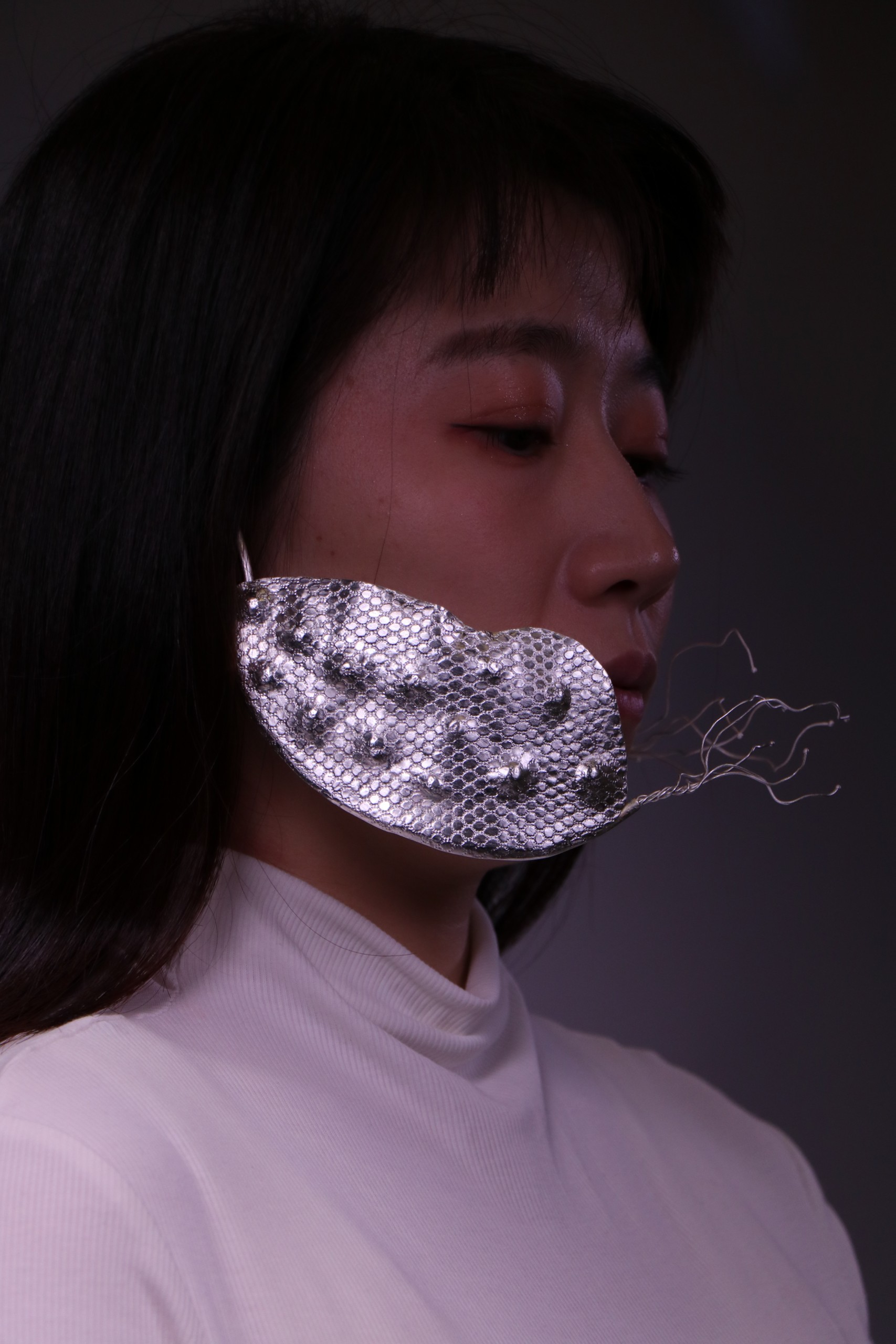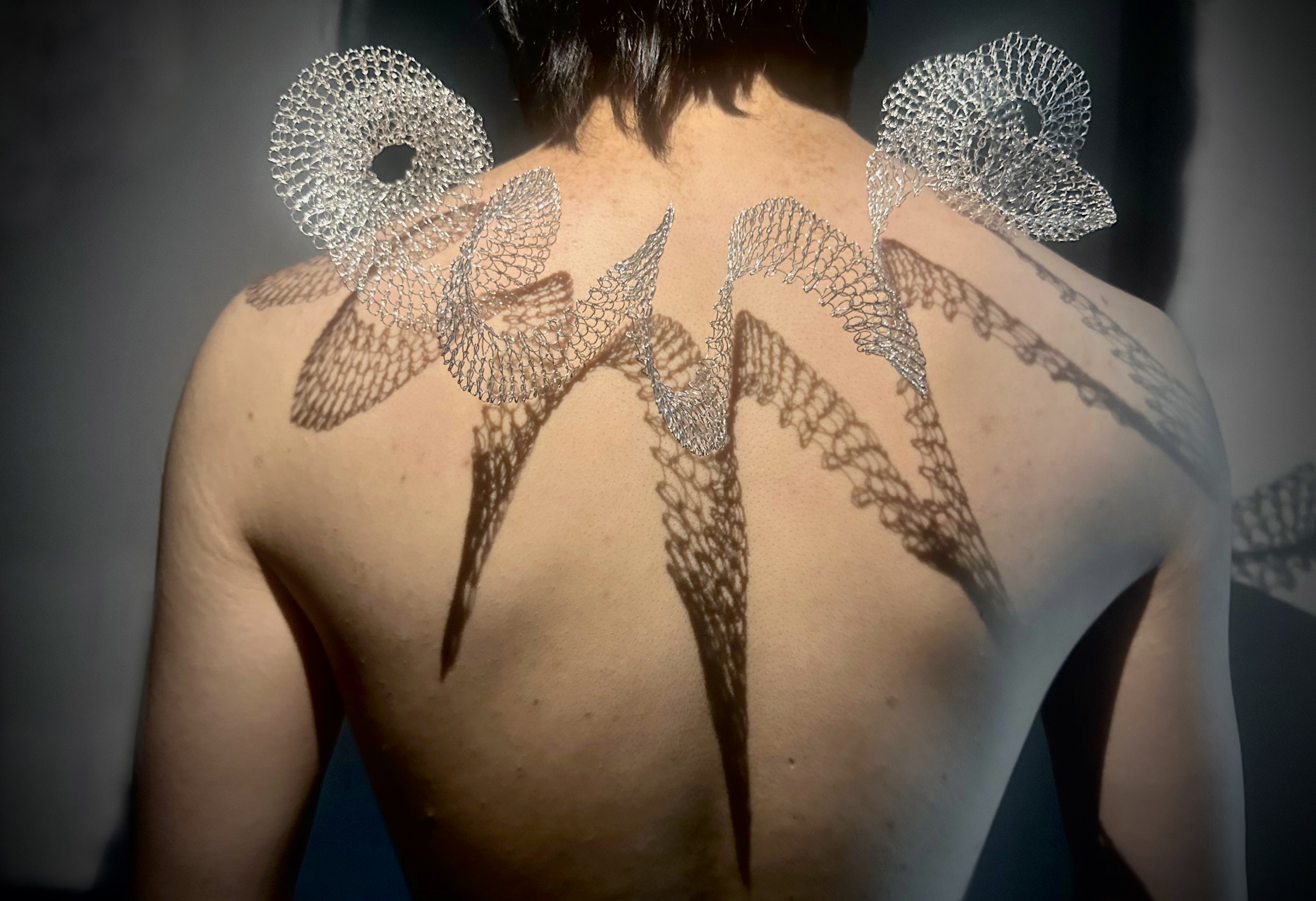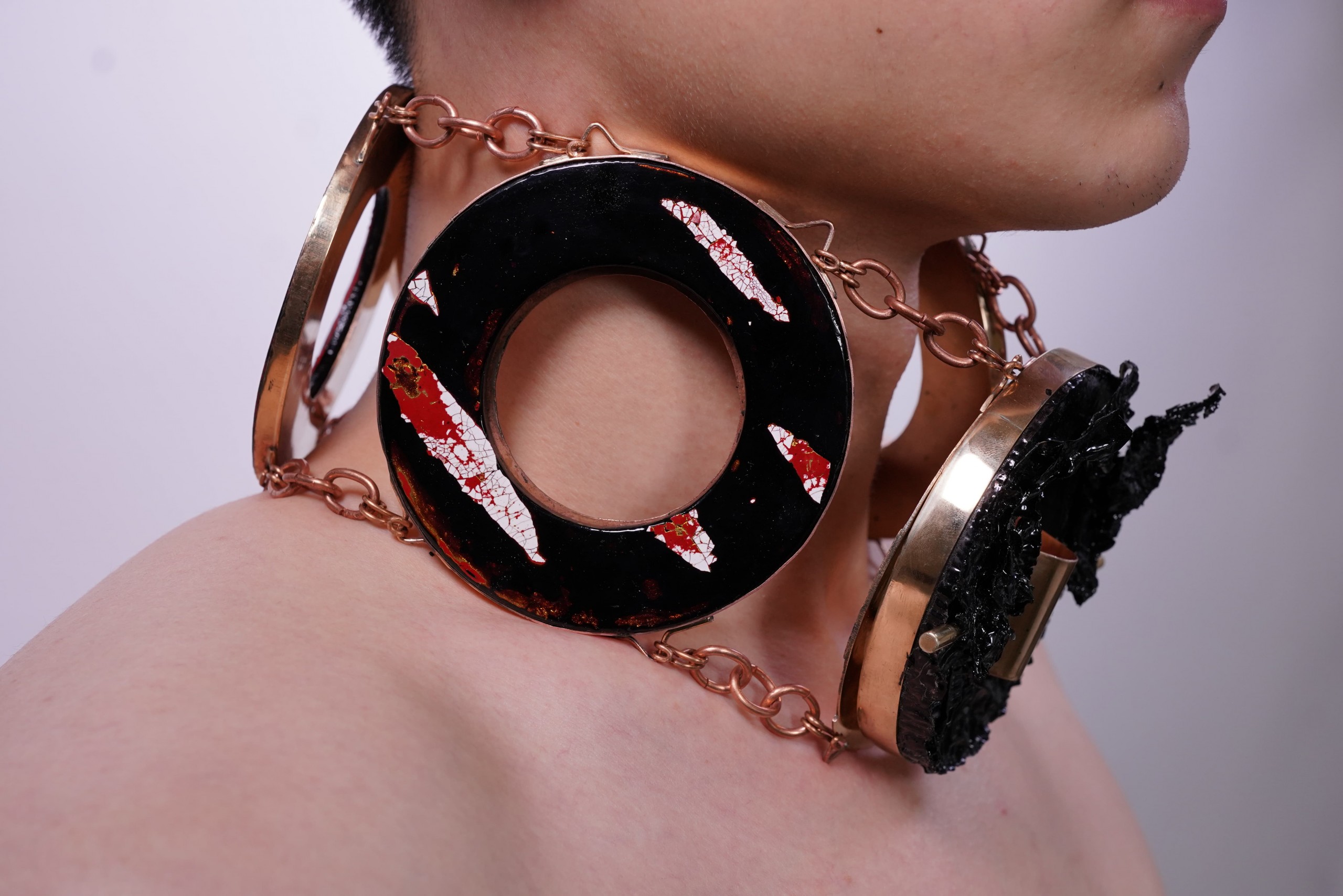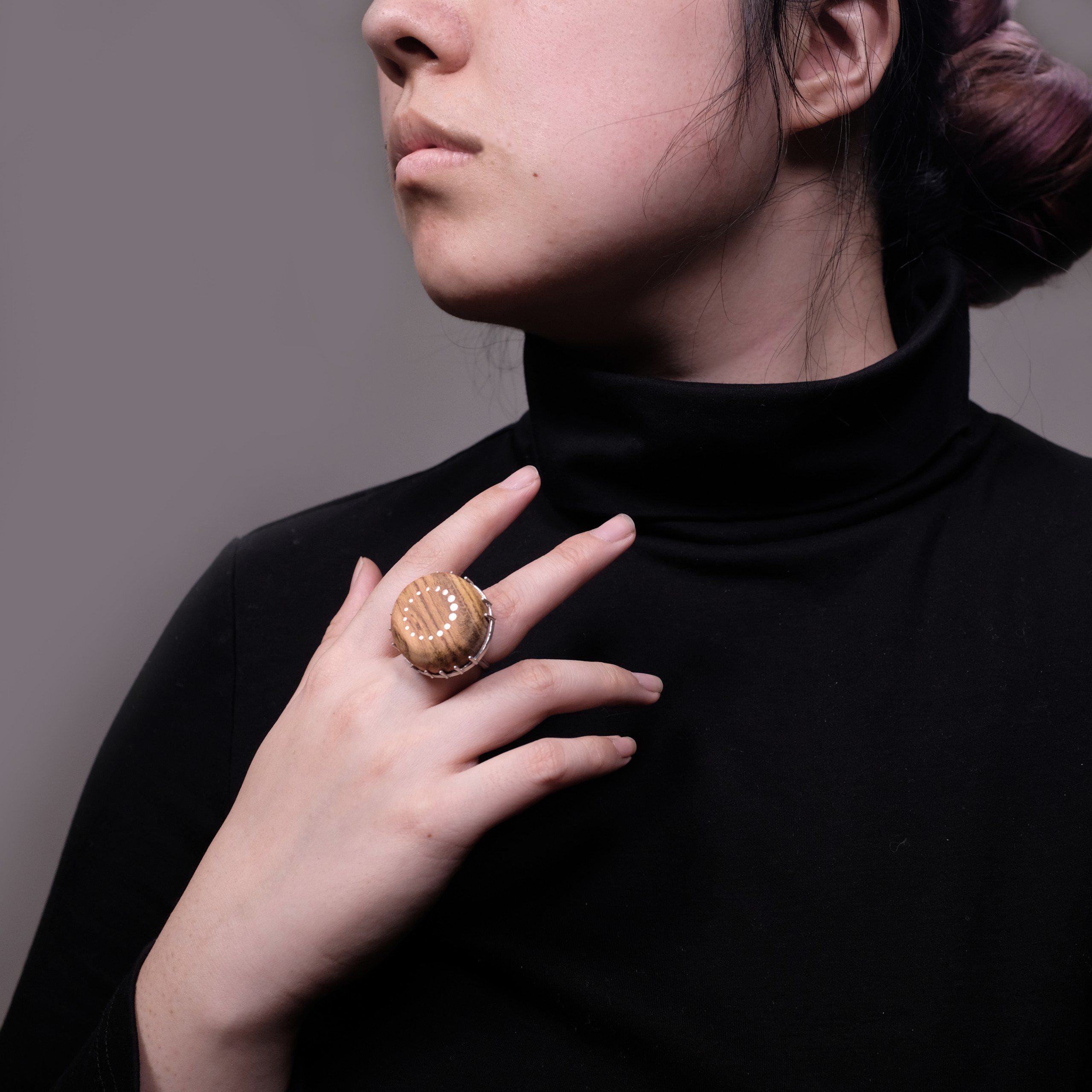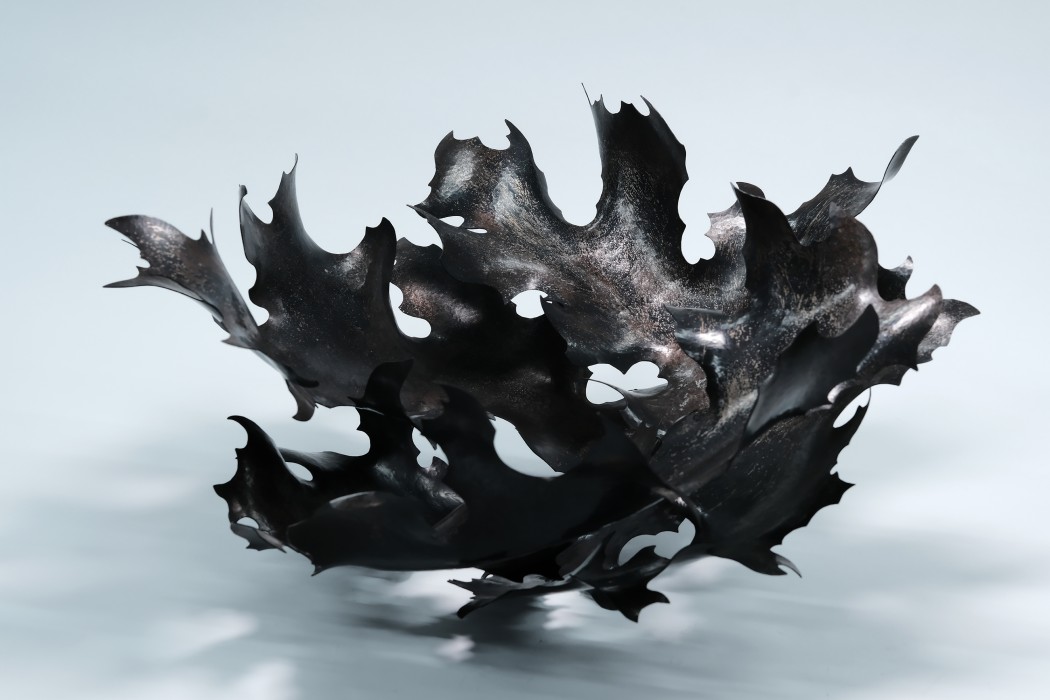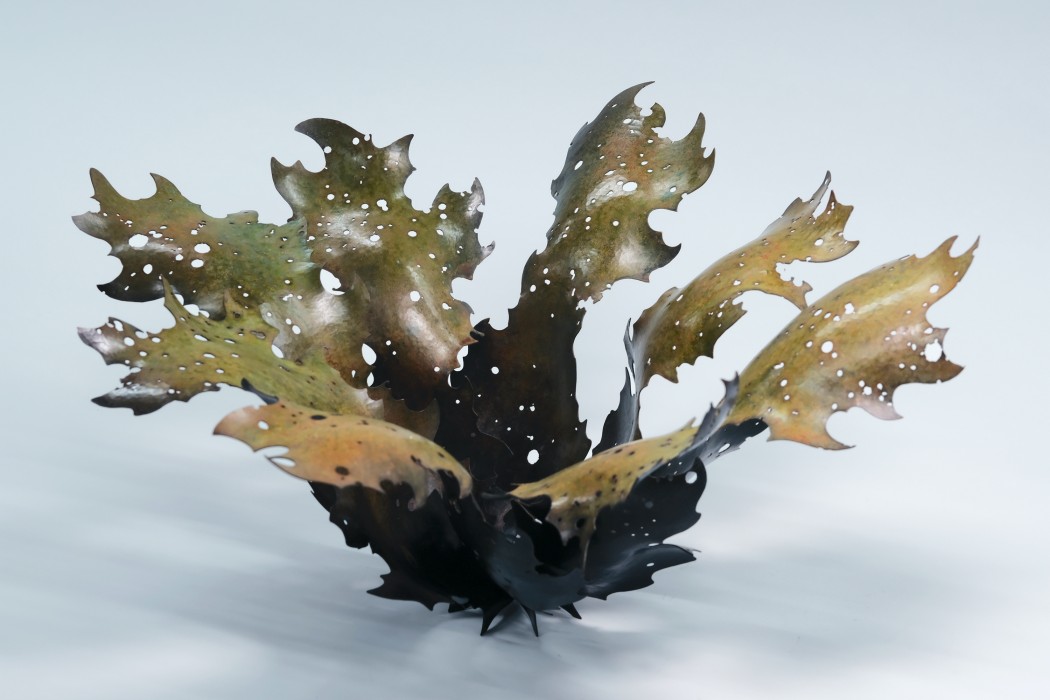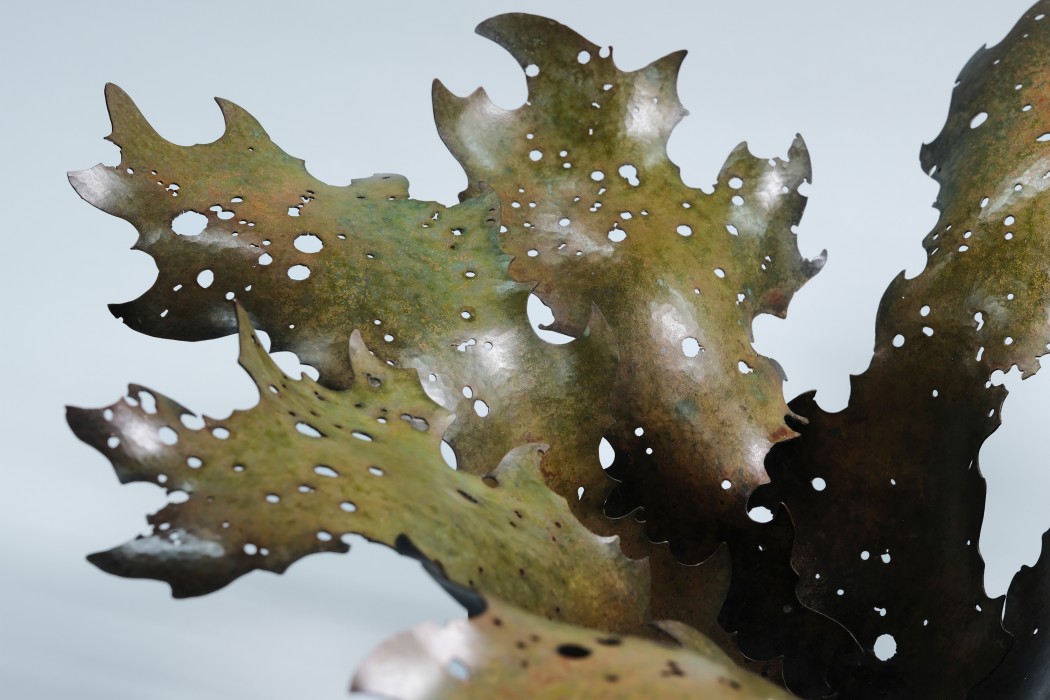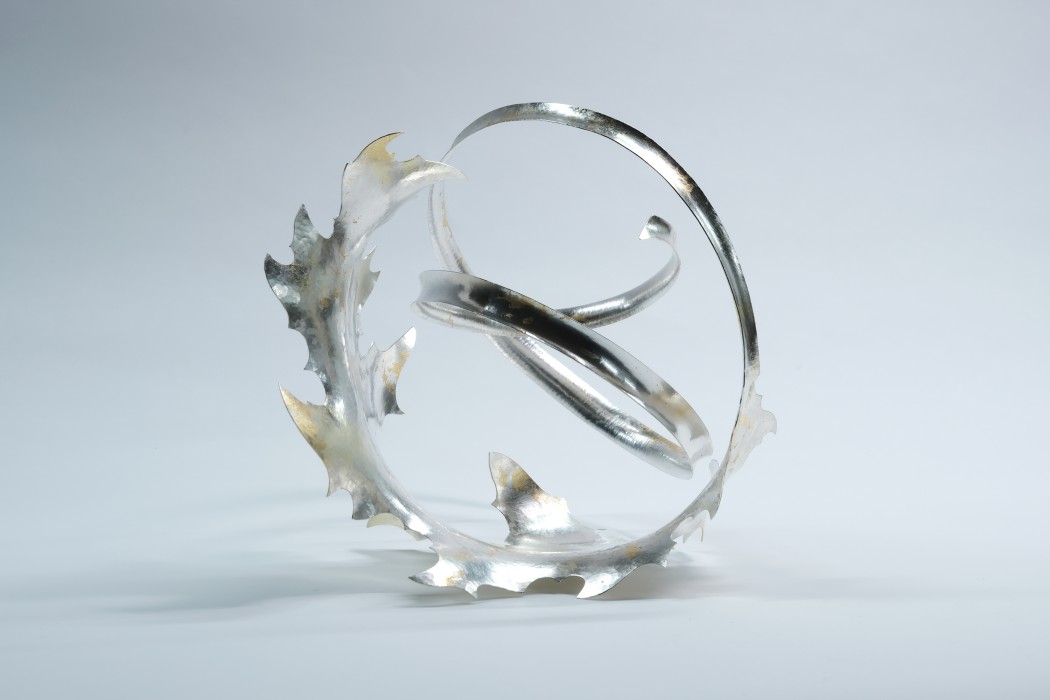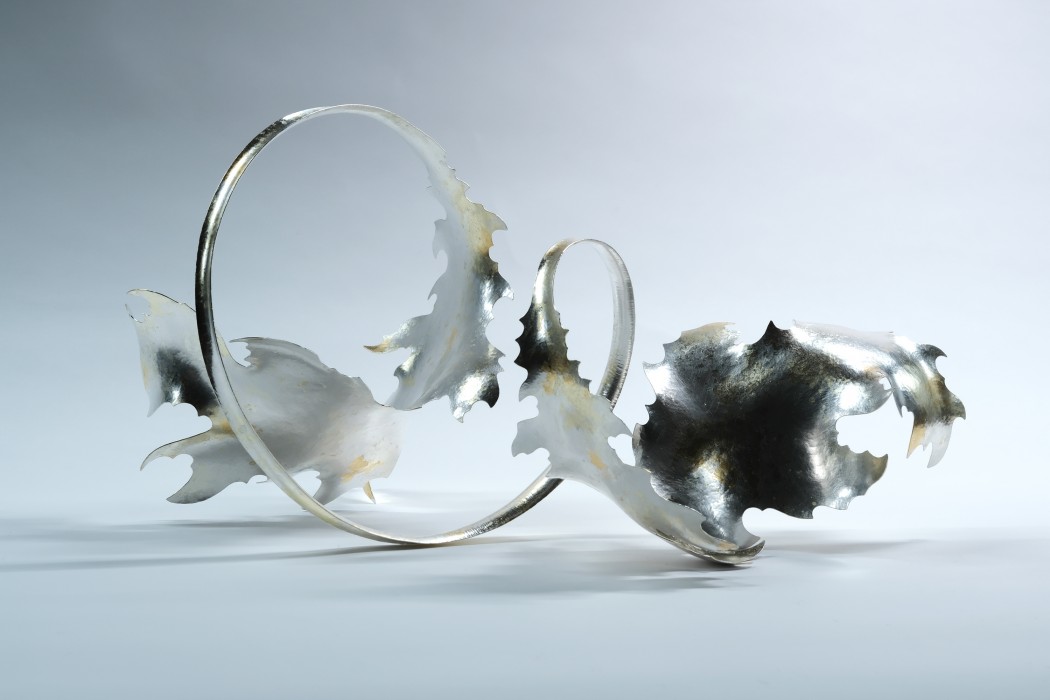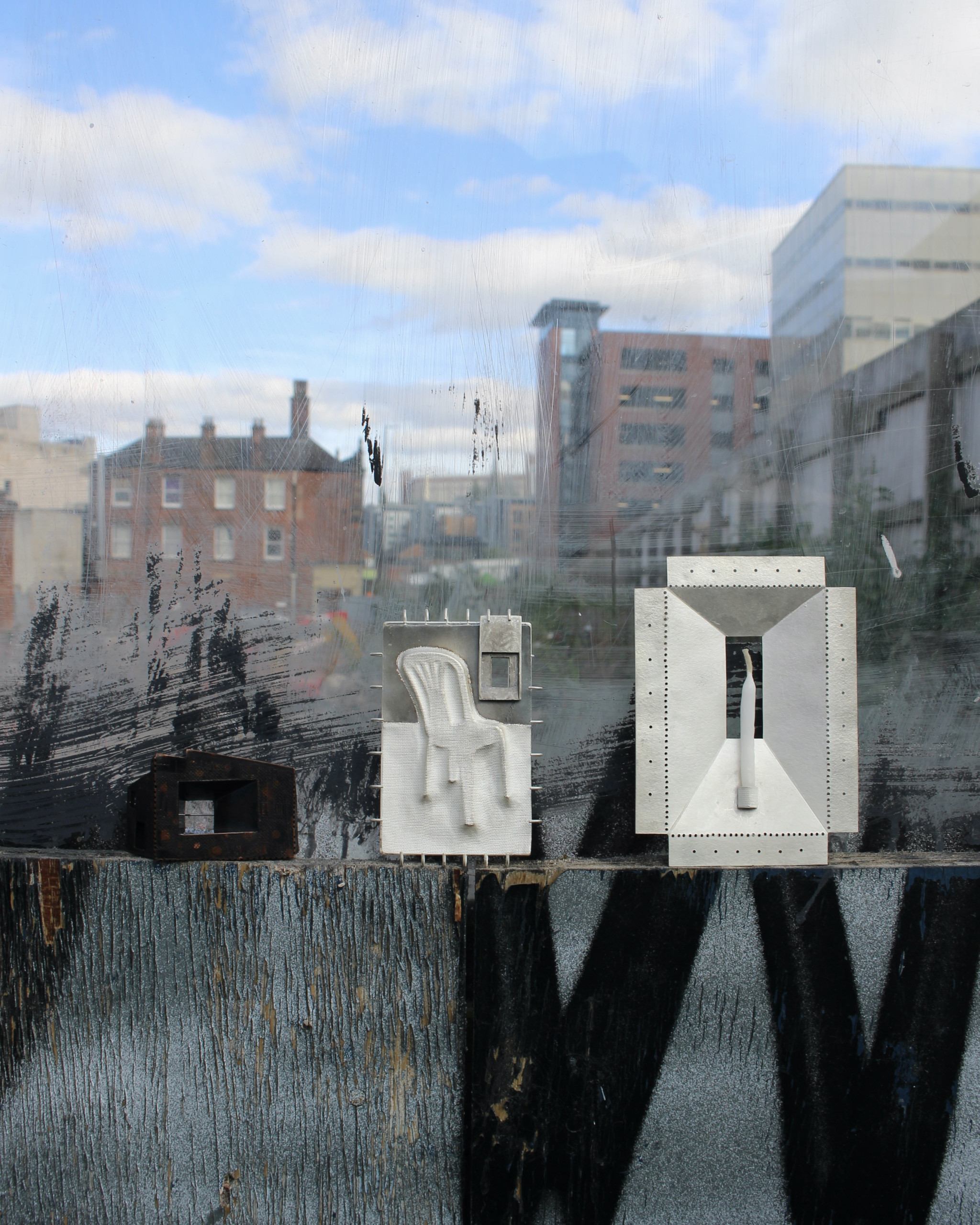
In an age where ancient symbolism has lost its mysterious power, Shinta Nakajima, has confronted the question, “Why do we decorate?”
In traditional silversmithing, flora has been used along with engraving and chasing techniques as symbols of wishes since ancient times. For instance, the Acanthus pattern was designed in ancient Greece, and it has been treated as a figurative language of vitality ever since. However, through its long development history, it is often pressed into partial decoration with curves and details that differ from the original nature of the acanthus. As Carl Jung said, “The symbol is alive only so long as it is pregnant with meaning” and the acanthus in silversmithing has become a formulaic decoration with forgotten historical significance.
By close observation, Nakajima preserves the beauty of the acanthus in its original form, with the rhythm of the dense foliage, the chips and stains, renewing the symbols meaning, decoration representing and preserving essential the impermanence and vitality of life in the vessel.

